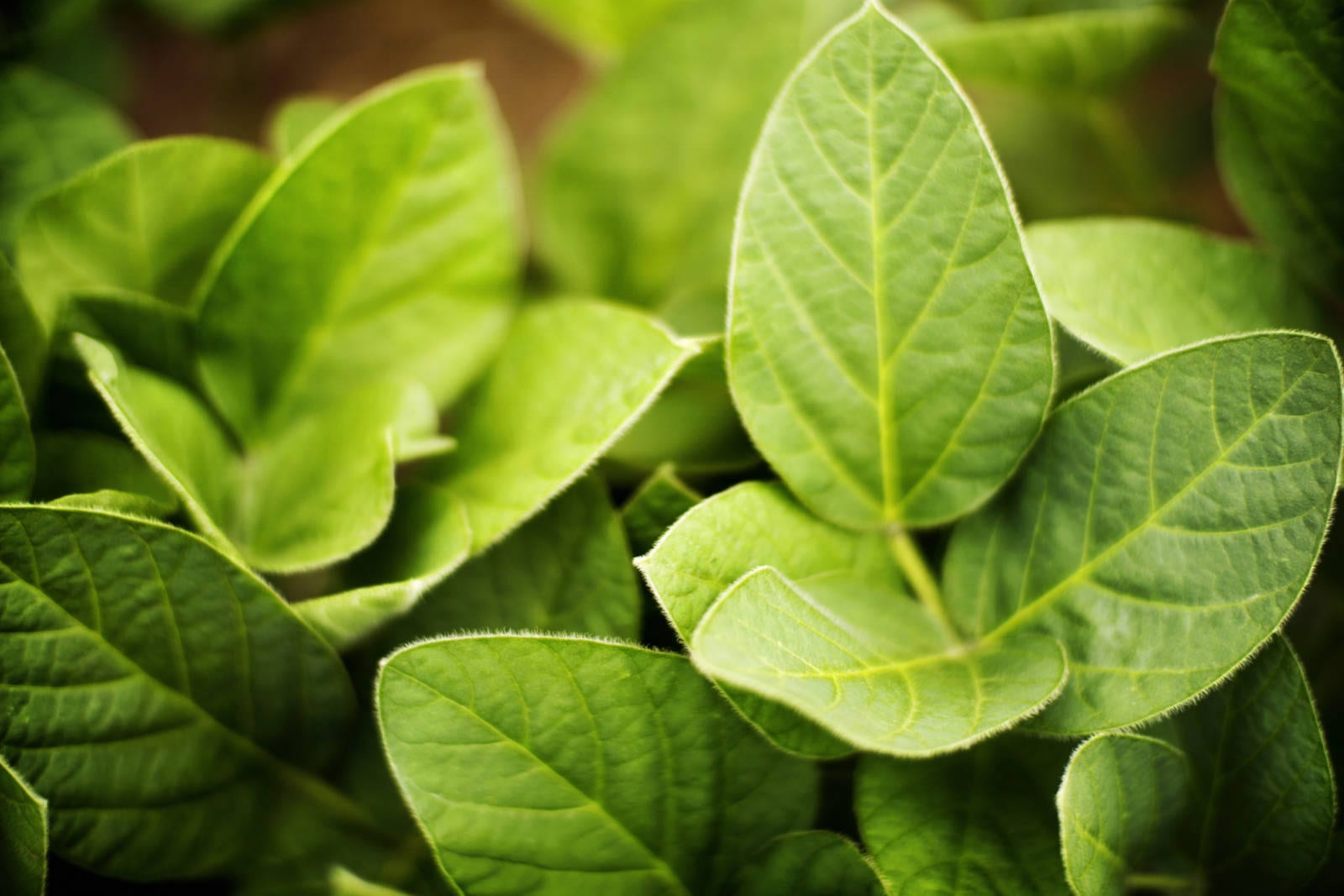One billionth is small. Smaller than microscopic. But work at the “nano” scale makes a big difference, according to nanotechnology innovators.
Dictionary definitions for nanotechnology describe it as a branch of technology targeting the scale of less than 100 nanometers. One nanometer is one-billionth of a meter, or 10-9. That’s the molecular and atomic level.
Applications of nanotechnology are commonly discussed in medicine and microchips, but an innovative U.S. company is unlocking its potential for agriculture. It’s an example of how technology leads to continuous improvement in sustainability for soybean production and more.
 “We’re bringing proven technology from pharma to agriculture,” says Landon Bunderson, Ph.D., and chief science officer for Aqua-Yield, a technology company started six years ago and based in Draper, Utah, in the western U.S. “Using nanotechnology to deliver plant inputs has the potential to revolutionize farming, while benefiting farmers and the environment.”
“We’re bringing proven technology from pharma to agriculture,” says Landon Bunderson, Ph.D., and chief science officer for Aqua-Yield, a technology company started six years ago and based in Draper, Utah, in the western U.S. “Using nanotechnology to deliver plant inputs has the potential to revolutionize farming, while benefiting farmers and the environment.”
Innovative input delivery
“A nanoparticle has mass that actually matters in solution,” explains Bunderson.
Solutions are common in agriculture, including soybean production. Farmers usually deliver fertilizer, pest control chemicals, and micronutrients to their crops via solutions.
“Chemical molecules in solutions go where water goes until something attracts them chemically,” he continues. “But nanoparticles make physical contact, as well, and can stick to tiny cracks and crevices of surfaces.”
According to Bunderson, whose background includes academic research focused on sustainable corn and soybean production, Aqua-Yield is not changing the inputs farmers use. But the company is enhancing existing systems to make what farmers use work better.
“Our technology delivers nanoparticles that attract and load chemical ions and molecules,” he explains. “These particles are significantly larger than the individual chemical ions that need to be delivered to plants.”
He compares the scale of loading chemical molecules into the nanoparticle to filling the area covered by an irrigation pivot with 1-meter tractor tires. The density of the chemistry gives it mass that doesn’t wash away as easily as the molecules on their own.
“Ions in solution typically move into plants through ion channels that plant cells regulate like border control,” Bunderson says. “Larger nanoparticles can circumvent typical channels because they can be treated like a foreign body that is brought into the plant and broken down, releasing the high concentration of chemistry more efficiently.”
 His colleague Mark Mitchell, wholesale agronomy accounts manager, offers other comparisons. “Our technology is similar to how vitamins are packed into multi-vitamin pills,” he says. “I think of it like delivering cattle from a truck to a pen instead of rounding them up into the pen from wherever they happen to be.”
His colleague Mark Mitchell, wholesale agronomy accounts manager, offers other comparisons. “Our technology is similar to how vitamins are packed into multi-vitamin pills,” he says. “I think of it like delivering cattle from a truck to a pen instead of rounding them up into the pen from wherever they happen to be.”
He adds that Aqua-Yield technology can enhance the delivery of any solution-based input to crops. 2020 will mark the second season of their focus on bringing this nanotechnology to row crops like soybeans.
Improved sustainability
“Our nanotechnology improves the efficacy of fertilizers, nutrients and crop chemicals,” Mitchell says. This translates to benefits for nutrient uptake, pest control, water quality and soil health.
For example, the delivery system protects fertilizer nutrients from binding to other elements in the soil and becoming unavailable to plants. And once the nanotechnology particles are in the soil, they can mine for additional nutrients and make them available to plants.
“Our particles act like a plinko game, bouncing and staying in the soil rather than running off,” explains Mitchell. “Farmers are learning that they can reduce fertilizer rates to get equal or better yields, while reducing excess nutrients released in the soil and saving input costs.”
In a North Dakota soybean trial in the U.S. Northern Plains, using nanotechnology to deliver micronutrients increased the content of iron, manganese, boron, copper and zinc in soybean leaves.
Aqua-Yield’s nanotechnology also supports soybean weed control with products like glyphosate and dicamba.
“Including our technology in the tank for weed control improves the kill rate, even in weeds that show tolerance or resistance to the chemistries. Weeds don’t recognize the particles, and take them in more efficiently,” Bunderson says. “While we continue to research our fit for best management practices for weed control, this technology is a tool to help get results.”
Better weed control protects yield from weed competition and harvested soybeans from including weed seeds.
Mitchell stresses the soil health and water quality benefits from this nanotechnology delivery system. It requires less salt load to deliver inputs and lower micronutrient rates.
“Those reductions are beneficial to soil microbes, which benefits soil health and composition,” he explains. “More efficient use of nutrients and chemicals also results in less runoff through the soil. That protects water quality.”
Research has shown that use of nanotechnology delivery makes nutrients more available to microbes, as well as plants, increasing soil organic matter over time.
“We continue to explore ways to use nanotechnology to improve fertilizer and chemistry use,” Bunderson says. “We are making already safe chemistry more efficient for continuous improvement.”
Aqua-Yield’s YouTube channel highlights ways that nanotechnology innovations support agricultural production and sustainability.
